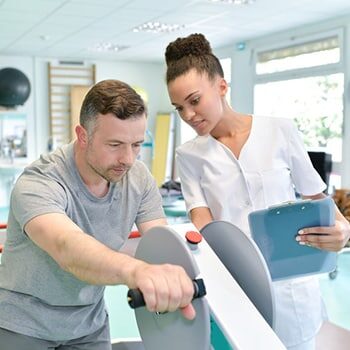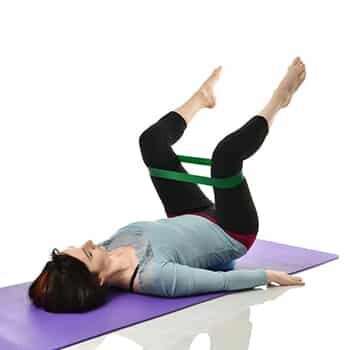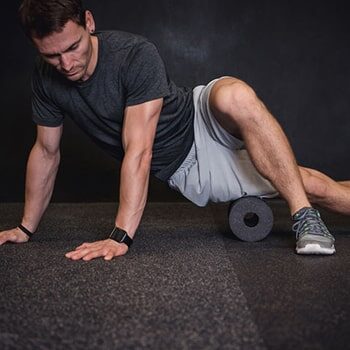
Rehabilitation

Types of Rehabilitation Therapy
There are several types of rehabilitation therapy dealing with primarily neuro-musculoskeletal injuries: physical medicine/physical therapy, occupational therapy, and vocational therapy. All three have similar training and education and then specialize in their respective fields. They have similar goals in getting the patient well and returned to activity to the best of their ability.
In our offices, our therapists’ practice physical medicine and include such procedures as therapeutic exercises, neuromuscular rehabilitation, and manual therapies. Getting you out of pain and back to you daily activities is our number one goal.
Some Conditions Chiropractic Rehab Treats
There are many medical conditions we see in our offices that require hands on therapy and rehabilitation. Most people think that mostly sports injuries would require this approach, but persons injured at work or in a motor vehicle accident are also in need of this treatment. We also have patients that work endless hours sitting behind a computer until they are slumped and in pain.
Chiropractic adjustments, along with manual therapy and exercises, are vitally important to treat these conditions and restore proper function.
Our doctors are well educated and can recommend a treatment protocol designed specifically for you to regain your health.


A Working Diagnosis and Treatment Plan
Setting up a treatment protocol that works for you always requires a proper assessment and examination of your condition. The doctor will review your history and perform a physical examination to arrive at a working diagnosis for your condition.
Once a working diagnosis is in place, the next step is to develop your treatment plan that will provide you with a path towards wellness. Our plans are designed to address the muscular and joint portion of your condition. For example, someone may arrive at our office with back pain, but after an evaluation we may find an underlying joint or muscle dysfunction in an associated area that is the real cause of the pain. In this case, the back pain is actually referred pain from another area.
Treating the cause of the pain is always the best and longest lasting approach to solving the problem instead of just treating the symptoms.
Life During and After Rehabilitation
Once the correct treatment plan is initiated you can begin looking forward to feeling a little better with each visit.
We inform our patients that as the progression of treatment continues the tissues begin to respond by feeling less tense and painful. Each treatment will enhance the healing of the involved tissues. Soon, the body begins to heal and you can begin rehabilitation activities such as manual therapy, stretching and exercises.
Of course, chiropractic adjustments are also usually part of how we can help alleviate joint pain/stiffness, reduce nerve tension and muscle spasms. Following the treatment plan is imperative to regaining your health and wellness.
If left untreated or under treated most injuries form extensive scar tissue and restoration requires more effort by the therapists, doctors, and patients. However, the success rate in our offices is close to 90% for most conditions. This is why most of our patients are happy with their treatments because they can enjoy a healthier, less painful way of life.

Patient Feedback:
Rehabilitation 3 Step Process
2. Get Adjusted
Based on your circumstances, a specific treatment plan will be implemented to correct your spine.
